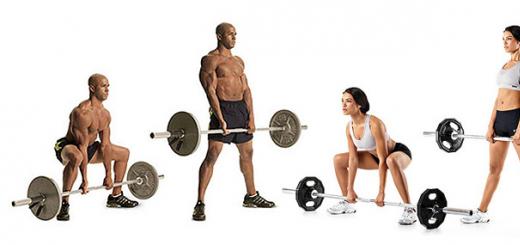One of the most important components of any heating boiler is the primary heat exchanger, in which thermal energy from the hot products of fuel combustion is transferred to the coolant. It is on the characteristics of this component that the operational characteristics of the equipment largely depend: its efficiency and economy, service life and cost. In the face of fierce competition between manufacturers, all components of domestic boilers tend to simplify the design and reduce the cost. At the same time, there is a stable demand for premium gas boilers with a copper heat exchanger. Why do consumers choose them despite the high price, and what are the advantages of copper as a structural material?
Metal to metal strife
The material from which the heat exchanger is made is the mediator that transfers thermal energy from the combustion products to the coolant. During the operation of the boiler, it must withstand high temperatures (up to 400-600 oC) for many months of the heating period without reducing its strength characteristics. Also, the material of the heat exchanger is in contact with two media - hot flue gases and a coolant (usually water). Therefore, very stringent requirements are imposed on the material, which are met by a narrow list of metals and alloys.
Currently, three materials are used for the manufacture of household gas boilers: steel, cast iron and copper. Each of them has its own strengths and weaknesses.

The most common and a budget option are steel heat exchangers. Steel has a rare combination of high ductility and strength even when exposed to high temperatures and mechanical stress. This characteristic of the heat exchanger material is especially important when it is exposed to heat. In the zone of high temperatures, thermal stresses are formed in the metal, and only plasticity prevents cracks from appearing.
But steel heat exchangers also have serious drawbacks: they are subject to corrosion, both from the side of the fire tubes and from the side of the coolant. To increase the service life, manufacturers increase the wall thickness of the heat exchanger, which reduces efficiency and increases fuel consumption.

Cast iron corrodes much more slowly than steel when in contact with chemically active media. But due to the reduced ductility, when using this metal, stringent requirements are imposed on operating modes. gas equipment. Sudden temperature changes can cause cracking.
So, for example, for different models with a cast-iron heat exchanger, the temperature difference of the heat carrier in the supply and return lines of the heating circuit cannot exceed 20-45 oC. To achieve this, complex systems for mixing hot coolant are used. It also imposes severe restrictions on the stability of the circulation pump.

Another traditional material for boiler equipment heat exchangers is copper. It has a unique combination of physical and chemical properties, which makes it an almost ideal material for these purposes. First of all, copper stands out for its exceptionally high thermal conductivity - 385 W / m * K (only silver is higher). For comparison: the thermal conductivity of cast iron is 50-60 W / m * K, and steel - from 47 W / m * K and below (depending on temperature and steel grade).
Also very valuable is the high resistance of copper to corrosion. During the operation of a copper heat exchanger, a thin but dense oxide film appears on the metal surface, which protects the underlying layers from corrosion.
Another important property of copper is a very low roughness coefficient, which is 133 times lower than that of steel. This has two consequences: low hydrodynamic resistance of copper pipes and a significantly lower rate of soot and pollution overgrowth.
Among the shortcomings of this metal, one stands out - the high price. Pure copper is up to 15-20 times more expensive than steel alloys used for heat exchangers, which automatically classifies boilers using a large amount of copper in the high price segment.
Finned heat exchangers and their problems
The choice of material for the primary heat exchanger largely determines its design. In particular, the developers of heating equipment compensate for the low thermal conductivity of steel and cast iron by increasing the heat exchange surface. It was this idea that formed the basis of the most common tubular heat exchangers with fins in domestic boilers. A plurality of plates are mounted in vertical rows on a curved (S-shaped) tube. Such a heat exchanger is located in the upper part of the combustion chamber. Flue gases pass through the narrow gaps between the plates from bottom to top, giving energy to the coolant.
In addition to steel, copper is occasionally used to make such heat exchangers. AT double-circuit boilers Some manufacturers still use bithermic heat exchangers: the coolant circulates in the outer copper pipe with fins, and the inner pipe is used to heat water for domestic hot water.
To increase power and efficiency in heat exchangers of this type, the gap between the fins can be only 1.5-2.5 mm. This significantly increases the rate of clogging of the lumen with soot and soot (combustion products). natural gas), which prevents complete combustion of the gas and leads to an increase in fuel consumption.
The small internal section of the pipes also increases the sensitivity of this node to the accumulation of lime deposits in the lumen. The deposition of hardness salts and dirt inside the heat exchanger significantly reduces heat transfer due to a decrease in the thermal conductivity of the walls and a violation of the circulation of the coolant.
It is estimated that just 1 mm of lime scale on the walls of the heat exchanger reduces the efficiency of the boiler by an average of 5%. But what is much more dangerous, mineral deposits disrupt the cooling process of the thin walls of the heat exchanger, which can burn out because of this.
As a result, boilers with this type require more frequent and labor-intensive maintenance: cleaning the combustion chamber and flushing from scale.
Copper heat exchanger: tradition and technology
The use of copper with its extraordinary thermal conductivity makes it possible to abandon the heat exchanger scheme in the form of a finned tube in favor of a simpler and robust design. Its principle is borrowed from the traditional samovar, in which the smoke tube passes through the water tank.

“Since 1948, when the inventor Maurice Friske released the first French gas boiler HYDROMOTRIX, the copper tubular heat exchanger has become the hallmark of our company's products,” says Roman Gladkikh, technical director of FRISQUET, the leader in the French heating equipment market. - Its scheme is fundamentally different from such common tubular heat exchangers with fins. The basis of the heat exchanger is a large-capacity copper boiler body, inside of which there are tubes for flue gases. They have stainless steel turbulators (distributors) that reduce the speed of flue gases to increase heat transfer.”
The result is a massive cylindrical heat exchanger, the production of which consumes 25 kg of pure copper. For comparison: steel counterparts with fins of comparable power weigh up to 5 kg. Such a heat exchanger operates without temperature shocks in softer and gentler modes than a thin tube with fins.

The described design of the heat exchanger has a number of important consequences. Due to the resistance to corrosion and ductility of copper, the service life of this assembly exceeds 20 years. The diameter of each smoke tube is 30 mm, which makes them much less prone to soot accumulation. For one heating season, the narrowing of the clearance for heat exchangers with fins can reach 40% (against 3% for tubular ones). Based on data accumulated in European countries over several decades of operation of copper tubular heat exchangers, it can be concluded that they have an average life of twice as long as compared to steel counterparts with fins.
In addition, it is copper tubular heat exchangers that make it possible to achieve maximum efficiency- 95%, which leads to significant energy savings and lower operating costs of the boiler.
The unique design with a large capacity boiler body significantly expands the functionality of the heating equipment. So, in FRISQUET double-circuit boilers, secondary heat exchangers are made in the form of copper coils located inside the boiler body. As a result, all boilers from this manufacturer allow the connection of an additional boiler or a second and third heating circuit as standard. For example, one heating circuit can provide heat to wall-mounted radiators (heat carrier temperature - up to + 85 oС), and the second - to underfloor heating systems (+20-45 oС).
Choice for the consumer
The presence of a copper tubular heat exchanger in the boiler is a good guideline for someone who is looking for a reliable and economical solution for their property. However, to make a responsible choice, you need to pay attention to other nuances.
Certification of the manufacturer according to ISO 9001. For the buyer, this means that the boiler has passed multi-stage quality control during production.
“In our ISO 9001 certified factory, everything from the acceptance of components and raw materials from third-party suppliers to the final assembly of the units is multi-stage controlled. Each operation performed is marked with a personal brand of the worker who performed it, says Roman Gladkikh (FRISQUET). - After the assembly is completed, each assembled boiler goes to the test bench, where it is tested on 15 parameters. In addition, in a certified laboratory according to the ISO45001 standard, not only the original components are tested, but also life tests of the equipment are carried out continuously on special stands.”
Availability of security systems in the boiler design, including coolant pressure sensors, coolant temperature, gas and draft overturning sensors, as well as ionization control of the flame.
The presence of intelligent functions - the ability to select scenarios, programming and remote control of the boiler, which significantly increases the efficiency of the heating system and increases its resource.
As we can see, copper as a structural material for boiler heat exchangers has many undeniable advantages. Private and corporate consumers are interested in such equipment, for which reliability, low operating costs and long service life of the boiler are of paramount importance.
This question necessarily arises among those who first choose a boiler for heating.
If space permits, at first glance, a cast iron heat exchanger is preferable. But this is only at first glance. Let's take a look at some of the misconceptions that lead people to opt for a bulky, expensive, and heavy floor-mounted cast-iron boiler, while ignoring light wall mounts, which are also cheaper. At the same time, we will not focus on the psychology of such a choice.
- The main arguments of the advocates of cast iron:
- Easy to install and commission.
- The gas consumption of a cast-iron boiler is the same as that of a wall-mounted one, since the efficiency of the boilers is the same.
- Such boilers are cheaper to operate (no need to periodically flush the heat exchanger).
- The heat exchanger from cast iron is not subject to corrosion.
- The boiler will last 50 years or more.
Point one.
On the first point. Cast iron is very sensitive to temperature changes. Therefore, it is very important to correctly design the connection of such a boiler. For example, make-up of the heating system should in no case be carried out before the boiler. The difference between the supply and return should not exceed 20°C; to ensure this parameter, it is necessary to provide a system for automatic mixing of water from the supply to the return. The choice of circulation pump plays an important role. It must fully comply with the boiler, otherwise the boiler will either overheat or turn on and off frequently. Both of these are unacceptable.
The wall-mounted boiler is not afraid of temperature changes. The make-up tap for many wall models is already provided in the design of the boiler, as well as circulation pump, which is selected when designing the boiler and fully corresponds to the design parameters.
Point two.
The fact is that the passport shows the values \u200b\u200bof the efficiency of the boiler when it works in ideal conditions. Those. water temperature in the boiler is 60°C, there are no deposits on the heat exchanger, no soot or scale. With an increase or decrease in the temperature of the heating water, the efficiency will decrease, since in the first case, with a decrease in the temperature difference, heat transfer will decrease, in the second case, the flue gases will be colder, which will lead to a decrease in thrust and underburning of gas.
To combat this phenomenon, modulating (with varying gas flow) burners have been designed. In boilers with a cast-iron heat exchanger, there are burners with power adjustment from 70 to 100%, and in boilers with a copper heat exchanger - from 30 to 100%. As a result, the efficiency of a wall-mounted boiler in real conditions is higher than that of a cast-iron one.
In addition, the large mass of the boiler and the large volume of water in it leads to a large thermal inertia of the system as a whole. Such a system heats up for a long time and cools down for a long time; when the heating mode is changed, the boiler either stands idle for a long time or operates with reduced efficiency. It should be noted that the downtime of the boiler, paradoxically, increases the gas consumption in general. This happens because the air in the combustion chamber is heated from the heat exchanger, draft is created through the chimney and the heated air rushes into the atmosphere, while taking heat away from the heating system.
Point three.
Here they are right. It makes no sense to wash a cast-iron heat exchanger with connecting dimensions of 2 "in the field. Scale will still remain on the walls. But it should be remembered that the deposition of 1 mm sediment on the walls of the heat exchanger reduces the boiler performance by 5%, while you will not notice anything, a decrease in efficiency can be installed only with the help of devices.In a copper heat exchanger, the flow rate will decrease with the growth of such a layer of deposits, which will signal the need for maintenance.By spending 1 - 2 thousand rubles, you will completely restore the operation of the boiler.
Point four.
This is also correct. Although if you do not flush the boiler, deposits inside the heat exchanger will cause uneven water cooling of the walls, leading in turn to thermal deformation of the cast iron, which can lead to the formation of cracks.
Point five.
Yes. A cast-iron boiler can work for 50 years, and a wall-mounted one only 15. Only technology and legislation do not stand still. Who knows if in 10 years all boilers except condensing ones will be outlawed?
There are a wide variety of models of heating units available. Despite such a variety, they can be structurally divided according to the type of combustion chamber and the material from which it is made. heat exchanger.
There are two main types of combustion chamber
Open combustion chamber - pros and cons
Boilers with such a chamber are familiar to almost everyone. Air enters the furnace through special air intake openings in the heating boiler, due to the rarefaction area that occurs in it during combustion. The heat exchanger in such a chamber, as a rule, is installed above the torch.
The advantages of a boiler with an open chamber include:
- low noise level during operation
- enough, simple design,
- easy installation
- easy maintenance.
The disadvantages include:
- risk of fire due to the presence of open flames,
- the need for mandatory supply ventilation in the place where the heat generating device is installed.
Closed combustion chamber - pros and cons
In this type of heating boilers, air is forcibly supplied with the help of a special electric fan. The furnace itself resembles a barrel with double walls, between which there is a coolant, and a torch burns in the center.
The advantages of a boiler with a closed chamber include:
- Higher efficiency, due to the large volume of the heat exchanger.
Also, due to the fact that the combustion chamber is isolated (closed) from the room where such a boiler unit is installed, then fire probability is zero.
- Air can also enter the closed furnace directly from the street, but in case of severe frosts it must be preheated.
The disadvantages include
- Increased noise
- high costs due to the operation of the fan,
- the possibility of attenuation of the thermal boiler in the event of a lack of electricity,
- high price compared to atmospheric (open) type boilers.
The design of modern household boilers
The designs of modern household boilers designed for autonomous heating are arranged in such a way that most of them (up to 85.0%) are the surfaces of the heat exchanger, which is its main unit. From what form it has, and what material was used for its manufacture, such indicators of the heating unit as efficiency, efficiency and environmental friendliness directly depend.
Currently, the main materials from which heat exchangers are made are -
- steel
- cast iron
- copper
Although models of boiler equipment have already begun to appear that have heat exchangers made of aluminum alloys and stainless steel in their design, we will not consider them due to isolated cases.
Steel heat exchangers
The simplest in terms of manufacturing technology are heating units with steel heat exchangers. It is this type that is most common among heating devices of domestic production.
The positive aspects of steel heat exchangers are
- low and affordable cost of boiler installations,
- as well as plastic characteristics of the material.
The latter indicator is very important for the high-quality and long-term operation of the heater, since when heated under the action of a burner fire, the walls of the heat exchanger are subjected to various stresses, which can lead to their deformation and even the formation of cracks.
A significant disadvantage of steel heat exchangers is the destructive effect of corrosion. At the same time, both its external and internal parts are subject to it, leading over time to its failure. Also, a negative factor in the use of steel for a heat exchanger is its relatively large weight and volume, which will consume a certain part of the gas for heating, as a result of which the boiler efficiency decreases.
Cast iron heat exchangers
Unlike the steel counterpart, the cast iron heat exchanger has high resistance to corrosion and long service life. But on the other hand, cast iron is more demanding, both in the process of manufacturing a heating boiler and during its operation. For example, if a cast-iron heat exchanger heats up unevenly (due to scale formed inside it, due to poor-quality water), this will lead to cracking and leakage.
There is also the possibility of cracks in the case when the temperature in the heating zone is very different from the readings of the coolant coming from the opposite direction of the heating system. To avoid such a situation, the heating circuit of the cast-iron boiler includes a 4-way mixing valve, through which hot water before the return line enters the heat exchanger. Subject to all operating rules, heating equipment with a cast-iron heat exchanger will last 20 years or more.
As the minuses of cast iron heat exchangers, the main ones can be distinguished - this is a high cost, the formation of cracks due to poor-quality coolant and non-compliance with operating rules, large inertia due to significant volume and mass.
Copper heat exchangers
The last main type of heat exchangers is a copper product. The most important advantages of such a heat exchanger are small volume and weight (as a result, a low inertia index), high corrosion resistance, compact design of the boiler. And although it was believed that a copper heat exchanger was not reliable enough, this is no longer true, thanks to the use of modern technologies and equipment in its manufacture.
This distrust was manifested due to the fact that copper heat exchangers were installed in the same combustion chambers as cast iron and steel products. And since such intense heating for copper was unacceptable, the heat exchangers from it quickly failed. Modern models of heating boilers with copper heat exchangers have a burner flame power reduced almost three times (up to 30.0%). Therefore, with the same power ratings, copper boilers are considered more economical, and in terms of service life they are almost equal to cast-iron models.
Hello dear readers. Have you ever wondered how much copper is in gas stove? If the stove is old, what is the best way to get rid of it? And how to properly dispose of it?

Ways to solve the dilemma
When renovations take place in your kitchen, a stove replacement is planned, the question arises - where to put the old stove? The options are:
- Sale. The stove must be in good condition. You must have time to organize the sale. This includes posting ads, and conversations, and meetings with potential buyers, and demonstrating your product to them.
- Landfill. You can't just throw away the board. It's not household junk. It must be properly disposed of. Otherwise - a fine, about 50,000 for private individuals.
- Disposal. It is better to entrust this business to professionals. There are a lot of companies doing this today. Of course, their services must be paid.
- Selling for scrap. This is the most acceptable option. You can also earn some income from it. You need to know the specifics of such an event. One way or another, this the best solution in a dilemma where to hand over the old electric or gas stove.
Specifics of slab scrapping

This method is most beneficial for those owners who can independently deliver the plates to the point of acceptance of metal products. At the same time, you can grab other metal debris (if any).
If you do not have your own transport, you can contact a company that takes out scrap metal and pays for it. It is better to find a company with the most favorable financial conditions. As a rule, you pay for the product minus the payment for the services of field specialists.
In order to successfully turn this case, you need:
They come and take the device. They can dismantle it themselves. The owner receives money for such change.
There are also subtleties here. When applying, the correct filling of the necessary documents is required. The client must prove his identity with a passport or other suitable document.
Specialists inspect and check the plate, the type of metal using special equipment. Weigh her. The possible presence of hazardous impurities and other elements is detected. Based on the checks, the final price is formed.
The client receives payment directly on the day of delivery.
How much does it cost to sell a gas stove for scrap? Much depends on its weight and content. For example, the standard weight of a small plate is 50 kg. Rates vary from city to city and from company to company. Usually this is the range of 3000 - 9000 rubles.
The price of a gas stove for scrap metal can be much less. Especially if it is a modest model in terms of weight and content.
Other nuances on old plates
When handing over an old stove, you need to know what is valuable in the old gas stove and which parts are not evaluated. For example, specialists do not evaluate any wires, windings and other components that are not used for processing.
How much non-ferrous metal is in a gas stove? Usually, cheap ferrous metals are used for the manufacture of such devices. So don't expect high rates. The percentage of non-ferrous metals is minimal. In rare cases, they can be found during disassembly.
Thus, if you want to earn extra money on the delivery of non-ferrous metal and are puzzled if there is non-ferrous metal in the gas stove, then this is not the best solution. You'd better look for objects with a high content of such metals.
How much copper is in an old gas stove? It is no secret that you can make a good profit on the delivery of copper. Especially the mudflows surrender solid masses. And often the owners decide whether there is copper in the gas stove and how much of it can cash advance businesses contain? In this regard, the answer is no. It doesn't matter what brand of plate.
Often, users of the Idel stove are dissatisfied with its functionality.

This is far from best model. This is a modest version with limited features and frequent breakdowns. Even summer residents are increasingly refusing it. And the fixed annuity interest rate raises a logical question, how much copper is in the Idel gas stove and how is it more profitable to rent it? In this regard, the stove is also disappointing. It is modest in size, assembled from ferrous metal. You won't get much for it. At best, 3000-5000 rubles.
But in the old Soviet gas columns and boilers, the situation with copper is much better. For example, in the old column there is a copper radiator. Its weight is 7 kg. The average price of 1 kg of copper is 145 rubles. That is, on the delivery of this component, you can get 1015 rubles.
Electric stove question
Is there copper in electric stove? This is a very topical issue for the owners of such devices in those situations when it is decided how it is more profitable to hand over an already unnecessary electric stove.
As a rule, in the wires of such plates there are copper conductors. Such material was required according to payday loans gallatin tn criteria of the PUE. Depending on the number of strands and their thickness, the potential benefit of the delivery of these products is also formed. But it's still a very small benefit.

How much copper is in the electric stove itself? Also a little. It can be present in modest proportions in heating components. There may also be tungsten. The type of electric stove also matters. For example, in small models with two burners, copper heaters may be rare.
General Benefits
When processed with metal mined from slabs, the following advantages are formed:
- Significant reduction in wasted resources.
- Benefits for recycling companies.
- The environment is less polluted.
- There is less metal trash in the landfill. It follows from the points of reception to the combines.
- The metal is reused in production.
Conclusion
Both their owners and the companies that receive such products benefit from the return of the slabs. The enterprises receive secondary raw materials for subsequent effective use.
The gas heat exchanger is the main unit of the gas boiler, but most often it is he who fails first due to the constant aggressive loads that it undergoes during operation. As a key element of the boiler, the heat exchanger ensures the transfer of heat from the heating substance to the heated medium. How aggressive the loads that arise on it, evaluate for yourself:
- Outside, the coil is heated to high temperatures as a result of gas combustion. Often, heat exchange equipment fails precisely because of “burning out”.
- From the inside, hot water acts on its walls, the temperature of which rises to 90 ° C. As a result, scale settles on them, the diameter of the pipes narrows, and the performance of the boiler deteriorates.
- Sharp temperature drops also do not pass without a trace, often leading to the appearance of cracks in the metal.
Given this, you need to choose a boiler, the gas heat exchanger of which is able to endure such loads for a long time without destruction. The gas equipment market offers various boilers of a wide range of prices, but this is not the case when low price or spectacular design should be the factors that determine the choice. It is much more important, for example, to pay attention to the weight of the boiler. Heavy boilers last much longer than lighter models. Everything is very simple - the main weight of the heating unit - over 90% - falls on the recuperator, and the heavier the boiler, the thicker the coil walls and the longer it will work in the heating system without repair. You should not choose the most inexpensive models either - it is likely that they will soon require pipe cleaning to remove lime deposits from the walls, as well as the replacement of individual components.
Gas boilers with a heat exchanger have many advantages: they are economical, efficient, comfortable to use. But at the same time, the use of gas as a fuel carries certain risks, and in order to minimize them, it is necessary to correctly select all elements of the heating system and carry out their installation in a quality manner.
Types of heat exchangers for the boiler
Manufacturers offer various heat exchange equipment, which is divided into three types according to the method of heat transfer:


If you want the purchased boiler to serve for a long time and efficiently, it is advisable to conduct a chemical analysis of the water that you will use in the home heating system before buying it and choose a model based on its results.
According to the material of manufacture, gas recuperators are steel, cast iron or copper.
Steel heat exchanger
 Widespread variant due to ease of manufacture and affordable price. Heat exchangers made of steel alloys are plastic, strong enough and resistant to mechanical stress. At the same time, their service life is short due to frequent corrosion processes, and operation requires increased fuel consumption to heat the coolant and maintain the standard temperature regime.
Widespread variant due to ease of manufacture and affordable price. Heat exchangers made of steel alloys are plastic, strong enough and resistant to mechanical stress. At the same time, their service life is short due to frequent corrosion processes, and operation requires increased fuel consumption to heat the coolant and maintain the standard temperature regime.
Cast iron heat exchanger
 Not subject to corrosion, therefore, more durable than steel. Requires special attention to operating conditions. The most vulnerable point is the boundary between the hot and warm parts of the heat exchanger. Operational errors increase the risk of cracks in the metal in this area. To prevent this, you should regularly flush the gas heat exchanger. The installation of a three-way mixing valve on the return line near the heat exchange unit, which pre-mixes hot and already cooled water and supplies liquid of moderate temperature into the cavity, will also help to minimize the risks. It should be remembered that boilers of foreign manufacturers with cast iron recuperators are not adapted to Russian operating conditions, therefore they are very vulnerable.
Not subject to corrosion, therefore, more durable than steel. Requires special attention to operating conditions. The most vulnerable point is the boundary between the hot and warm parts of the heat exchanger. Operational errors increase the risk of cracks in the metal in this area. To prevent this, you should regularly flush the gas heat exchanger. The installation of a three-way mixing valve on the return line near the heat exchange unit, which pre-mixes hot and already cooled water and supplies liquid of moderate temperature into the cavity, will also help to minimize the risks. It should be remembered that boilers of foreign manufacturers with cast iron recuperators are not adapted to Russian operating conditions, therefore they are very vulnerable.
Copper heat exchanger
 Its advantages include low specific gravity and small capacity of the device, compactness, resistance to corrosion, low fuel consumption for heating to operating temperature. The main disadvantages of such heat exchange equipment are high cost and insufficient reliability.
Its advantages include low specific gravity and small capacity of the device, compactness, resistance to corrosion, low fuel consumption for heating to operating temperature. The main disadvantages of such heat exchange equipment are high cost and insufficient reliability.
Flushing the heat exchanger will extend the life of the boiler

Even a properly selected boiler can last a long time or not very much, depending on what the operating conditions are. Today there is no need to talk about the high quality of the heat carriers used in heating systems, so their timely and regular cleaning will help extend the life of the boiler and gas heat exchanger.
Boiler flushing can be carried out manually, as well as hydraulically and chemically. In the first case, deposits are removed with scrapers after opening the boiler. Hydraulic flushing is carried out using a pump that supplies pressurized tap water to the heating unit, which exfoliates deposits and is discharged into the sewer system using a hose. In the third option, flushing is carried out using chemicals that soften and decompose the sediment on the surfaces of the plate heat exchanger.











